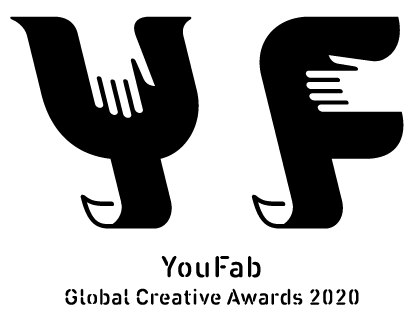-
作品タイトル(日本語)
TRANSITION
-
作品タイトル(英語)
TRANSITION
-
制作物のコンセプトを記載してください。
Transition is about how the evolutionary process of the past, the present and the future are perceived. Recitivism beyond man’s decentralization reminds us that humanity is only a fictional element in the evolutionary process and that it may not exist in the future. Rather than looking from a negative standpoint to this disappearance, it means that the loss of the human-centered world is a natural process of transition and a part of evolution. It reminds you that you are in a mutation process with non-human actors and that you have just been transformed into something else.
Transition; is an installation that occurs when 5 mirrors are vibrated at different intensities. With the vibration motors vibrating the mirrors, the audience sees their own image as a blurred pattern. The vibrational frequencies are different from each other, symbolizing the unreadable evolutionary periods of humanity in the deepest time. The mirrors that the viewer sees the most blurred copy depicts the past and future of mankind, and the mirror that he most clearly sees is the present time. -
制作物のコンセプトを記載してください。(英語)
Transition is about how the evolutionary process of the past, the present and the future are perceived. Recitivism beyond man’s decentralization reminds us that humanity is only a fictional element in the evolutionary process and that it may not exist in the future. Rather than looking from a negative standpoint to this disappearance, it means that the loss of the human-centered world is a natural process of transition and a part of evolution. It reminds you that you are in a mutation process with non-human actors and that you have just been transformed into something else.
Transition; is an installation that occurs when 5 mirrors are vibrated at different intensities. With the vibration motors vibrating the mirrors, the audience sees their own image as a blurred pattern. The vibrational frequencies are different from each other, symbolizing the unreadable evolutionary periods of humanity in the deepest time. The mirrors that the viewer sees the most blurred copy depicts the past and future of mankind, and the mirror that he most clearly sees is the present time. -
作品の素材・仕様
Kinetic Installation
200x195x150 cm
2017
Vibration motor, Custom software and Circuit, Motion sensor, Plexi mirror, Iron plate, Aluminum, Spring -
作品の素材・仕様(英語)
Kinetic Installation
200x195x150 cm
2017
Vibration motor, Custom software and Circuit, Motion sensor, Plexi mirror, Iron plate, Aluminum, Spring -
作品のリファレンスURL
https://vimeo.com/289003076
-
作品の映像URL
https://vimeo.com/289003076
-
公式サイト、もしくはSNSのURL
https://csismn.com/
-
プロフィール情報
Candaş Şişman (1985, İzmir-Turkey) studied fine arts in high school and graduated from the Animation department of Eskişehir Anadolu University. He spent one year at university in the Netherlands, studying multimedia design. In 2011 he co-founded Nohlab, a studio producing interdisciplinary experiences around art, design & technology. He is also a member of NOS Visuals, which is a collaborative platform that creates real-time, sound-reactive audiovisual performances. For the last five years, he gives lectures on the interaction between sound and visuals in university.
Candaş Şişman has received several awards since 2007, among which is an Honorary Mention from Prix ARS Electronica Computer Animation/Film/VFX and Jury Selection Award in Art Division from 18th Japan Media Arts Festival. He participated in many exhibition and festival, such as Venice Architecture Biennale, TED X, ARS Electronica, Todaysart Festival and Japan Media Arts Festival. Candaş Şişman recently exhibited Sonicfield-01 Sound Installation in Venice Architecture Biennale and ‘FLUX’ audiovisual installation among İlhan Koman Hulda festival in İstanbul.
Candaş Şişman aims to manipulate our notion of time, space and motion by his work, using digital and mechanical technologies. Taking the natural sciences and universe as his reference point, the artist combines physical forms with digitally produced images. Thus a bridge between the physical world and the digital world becomes visible. The works of Şişman build on complex bases, but the forms are simple, allowing the audience to engage in intellectual interaction with the artwork, in which the “process” is the utmost important structural element. -
参加メンバー
Concept and Design: Candaş Şişman
Creative Coding & Electronics & Technical Supervisor: Burak Öztürk
Thanks: Lalin Akalan, Pınar Akkurt, Ali Uzun, Osman Dede, Ebru Yetişkin
Supported by the Zorlu Performance Arts Center -
居住国
Turkey
- 64
TRANSITION
Transition is about how the evolutionary process of the past, the present and the future are perceived. Recitivism beyond man’s decentralization reminds us that humanity is only a fictional element in the evolutionary process and that it may not exist in the future. Rather than looking from a negative standpoint to this disappearance, it means that the loss of the human-centered world is a natural process of transition and a part of evolution. It reminds you that you are in a mutation process with non-human actors and that you have just been transformed into something else.
Transition; is an installation that occurs when 5 mirrors are vibrated at different intensities. With the vibration motors vibrating the mirrors, the audience sees their own image as a blurred pattern. The vibrational frequencies are different from each other, symbolizing the unreadable evolutionary periods of humanity in the deepest time. The mirrors that the viewer sees the most blurred copy depicts the past and future of mankind, and the mirror that he most clearly sees is the present time.
Transition; is an installation that occurs when 5 mirrors are vibrated at different intensities. With the vibration motors vibrating the mirrors, the audience sees their own image as a blurred pattern. The vibrational frequencies are different from each other, symbolizing the unreadable evolutionary periods of humanity in the deepest time. The mirrors that the viewer sees the most blurred copy depicts the past and future of mankind, and the mirror that he most clearly sees is the present time.


